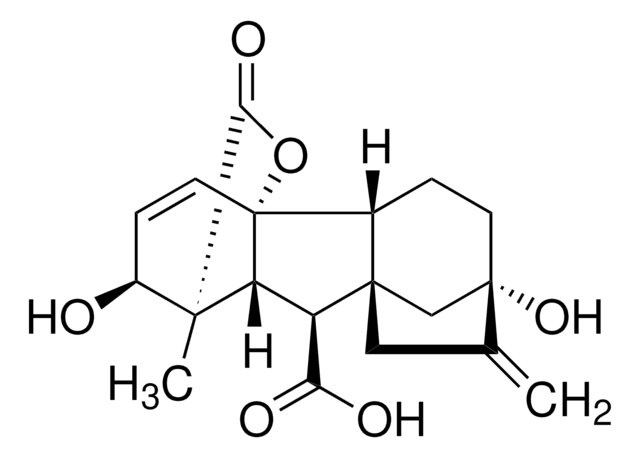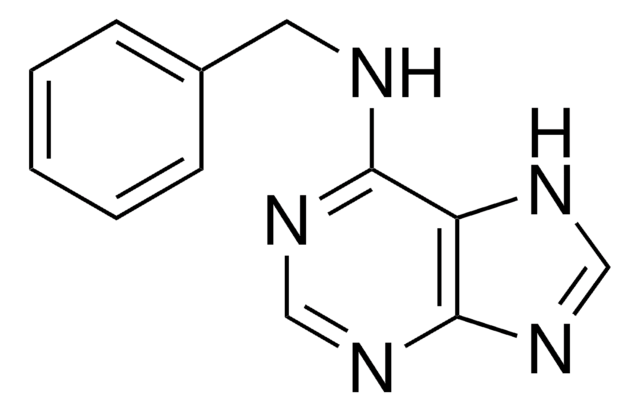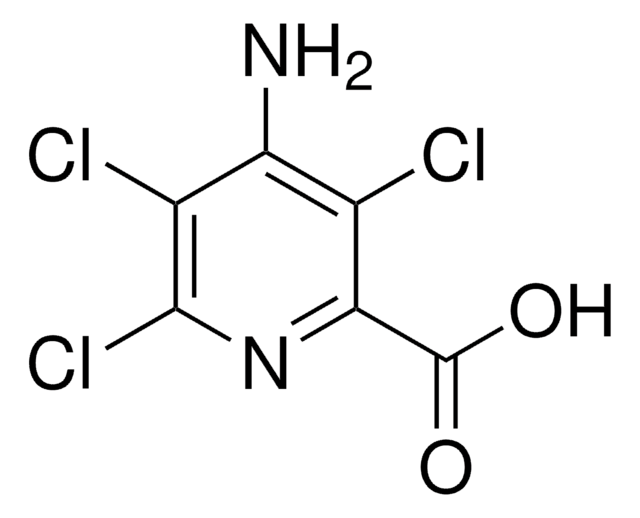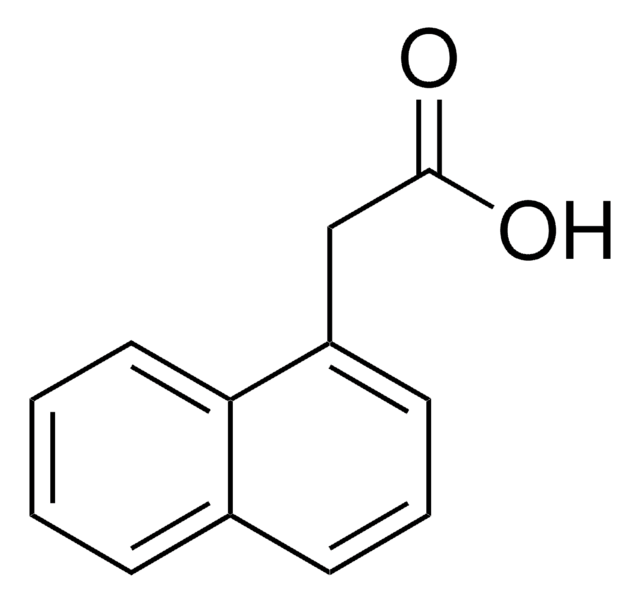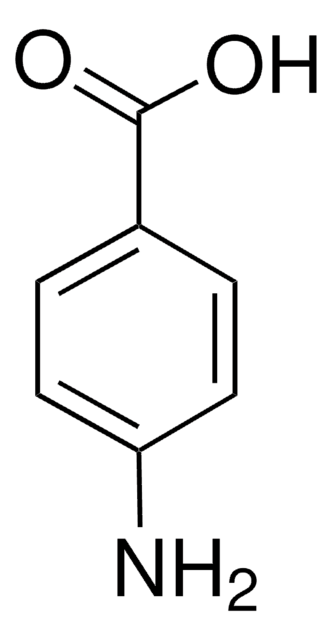C0413
4-Chlorophenoxyacetic acid
BioReagent, suitable for plant cell culture, crystalline
Sinonimo/i:
4-CPA
Autenticatiper visualizzare i prezzi riservati alla tua organizzazione & contrattuali
About This Item
Formula empirica (notazione di Hill):
C8H7ClO3
Numero CAS:
Peso molecolare:
186.59
Beilstein:
1211804
Numero CE:
Numero MDL:
Codice UNSPSC:
10171502
ID PubChem:
NACRES:
NA.72
Prodotti consigliati
Nome Commerciale
BioReagent
Stato
crystalline
tecniche
cell culture | plant: suitable
applicazioni
agriculture
Stringa SMILE
OC(=O)COc1ccc(Cl)cc1
InChI
1S/C8H7ClO3/c9-6-1-3-7(4-2-6)12-5-8(10)11/h1-4H,5H2,(H,10,11)
SODPIMGUZLOIPE-UHFFFAOYSA-N
Cerchi prodotti simili? Visita Guida al confronto tra prodotti
Applicazioni
4-Chlorophenoxyacetic acid has been used in para-chlorophenoxyacetic acid (p-CPA) residue assay.
4-chlorophenoxy acetic acid (4-CPA), a chlorine derivative of phenoxyacetic acid (PA), is a plant growth regulator used as a herbicide.
Azioni biochim/fisiol
4-Chlorophenoxyacetic acid is a synthetic auxin, that is used to induce parthenocarpic ovary growth on flowers of wild type plants.
Avvertenze
Warning
Indicazioni di pericolo
Consigli di prudenza
Classi di pericolo
Acute Tox. 4 Oral
Codice della classe di stoccaggio
11 - Combustible Solids
Classe di pericolosità dell'acqua (WGK)
WGK 1
Punto d’infiammabilità (°F)
Not applicable
Punto d’infiammabilità (°C)
Not applicable
Dispositivi di protezione individuale
dust mask type N95 (US), Eyeshields, Gloves
Scegli una delle versioni più recenti:
Possiedi già questo prodotto?
I documenti relativi ai prodotti acquistati recentemente sono disponibili nell’Archivio dei documenti.
I clienti hanno visto anche
Tomato fruit development in the auxin-resistant dgt mutant is induced by pollination but not by auxin treatment
Mignolli F, et al.
Journal of Plant Physiology, 169(12), 1165-1172 (2012)
p-CPA enhances growth and quality of muskmelon fruits
Hayata Y, et al.
Plant Growth Regulation, 36(1), 13-18 (2002)
G Carbonara et al.
Farmaco (Societa chimica italiana : 1989), 56(10), 749-754 (2001-11-23)
2-(4-Chloro-phenoxy)propanoic and 2-(4-chloro-phenoxy)butanoic acids are compounds known to block chloride membrane conductance in rat striated muscle by interaction with a specific receptor. In the present study, a series of chiral analogues has been prepared and tested to evaluate the influence
K T Ranjit et al.
Environmental science & technology, 35(7), 1544-1549 (2001-05-12)
The photocatalytic degradation of p-chlorophenoxyacetic acid has been investigated in oxygenated aqueous suspensions of lanthanide oxide-doped TiO2 photocatalysts. Complete mineralization was achieved. The enhanced degradation is attributed to the formation of Lewis acid-base complex between the lanthanide ion and the
Birame Boye et al.
Environmental science & technology, 36(13), 3030-3035 (2002-07-30)
The herbicide 4-chlorophenoxyacetic acid (4-CPA) has been degraded in aqueous medium by advanced electrochemical oxidation processes such as electro-Fenton and photoelectro-Fenton with UV light, using an undivided cell containing a Pt anode. In these environmentally clean methods, the main oxidant
Il team dei nostri ricercatori vanta grande esperienza in tutte le aree della ricerca quali Life Science, scienza dei materiali, sintesi chimica, cromatografia, discipline analitiche, ecc..
Contatta l'Assistenza Tecnica.